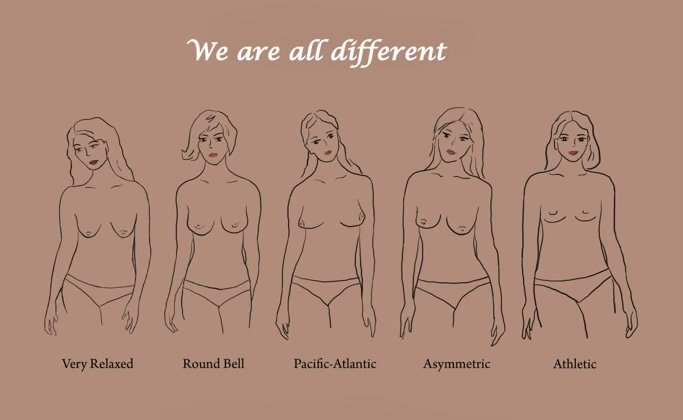Celebrating the Diversity of Breasts
Breasts come in a beautiful array of shapes, sizes, and characteristics, reflecting the diversity of the human body. While media and societal norms often present a narrow definition of "ideal" breasts, it's important to celebrate and appreciate the unique features of each individual.
Image by Jenny Lee
Size and Shape
Breast size and shape can vary widely among individuals. Some people have smaller breasts, while others have larger ones. The shape of breasts can range from round and full to teardrop-shaped or asymmetrical. It's crucial to remember that there is no "one size fits all" when it comes to breasts, and every size and shape is beautiful in its own way.
Nipple Variation
Nipples also exhibit diversity in appearance. They can be large or small, protruding or inverted, and vary in color from light pink to dark brown. Contrary to popular belief, nipple size and shape do not determine breastfeeding ability or sexual pleasure. Each nipple type is normal and natural.
Breast Composition
Breasts are composed of a combination of glandular tissue, fat, and connective tissue. The ratio of these components can influence breast density, which refers to the amount of glandular and connective tissue compared to fatty tissue. Dense breasts may feel firmer to the touch and appear more compact on mammograms, while fatty breasts are softer and less dense.
Symmetry and Asymmetry
It's common for breasts to have slight differences in size, shape, or position. In fact, perfect symmetry is rare in natural breasts. Many people have one breast slightly larger or higher than the other, and this asymmetry is usually normal and not a cause for concern. Properly fitted bras can help accommodate asymmetrical breasts and provide balanced support.
An Image iStock.com/VladimirFLoyd by via healthy women
Changes Over Time
Breasts undergo changes throughout a person's life due to factors such as puberty, pregnancy, breastfeeding, weight fluctuations, hormonal shifts, and aging. These changes can affect breast size, shape, and texture. It's important to embrace these natural changes and adapt to them with self-care and self-compassion.
Dispelling Myths and Embracing Diversity
Unfortunately, societal pressures and media representations often promote unrealistic standards of beauty, including idealized images of breasts. This can lead to body dissatisfaction and low self-esteem among individuals who don't fit these narrow ideals. It's crucial to challenge these unrealistic expectations and celebrate the diversity of bodies, including breasts of all shapes, sizes, and characteristics.
Body Positivity and Self-Acceptance
Embracing diversity extends to embracing our own bodies. Whether you have small breasts, large breasts, asymmetrical breasts, or any other variation, learning to love and accept your body is a powerful act of self-care. Surrounding yourself with positive body images, engaging in self-affirming practices, and practicing gratitude for your body's strength and resilience can contribute to a healthier body image and overall well-being.
Celebrating Diversity
There is no standard or "perfect" type of breast. Diversity is what makes each person unique and beautiful. By embracing and celebrating the diversity of breasts, we promote body positivity, self-acceptance, and inclusivity. Let's honor and appreciate the beauty of all breast types and encourage a culture of acceptance, respect, and love for our bodies.
Remember, your worth and beauty are not defined by societal standards or media portrayals. Embrace your unique features, including your breasts, with pride and confidence.




